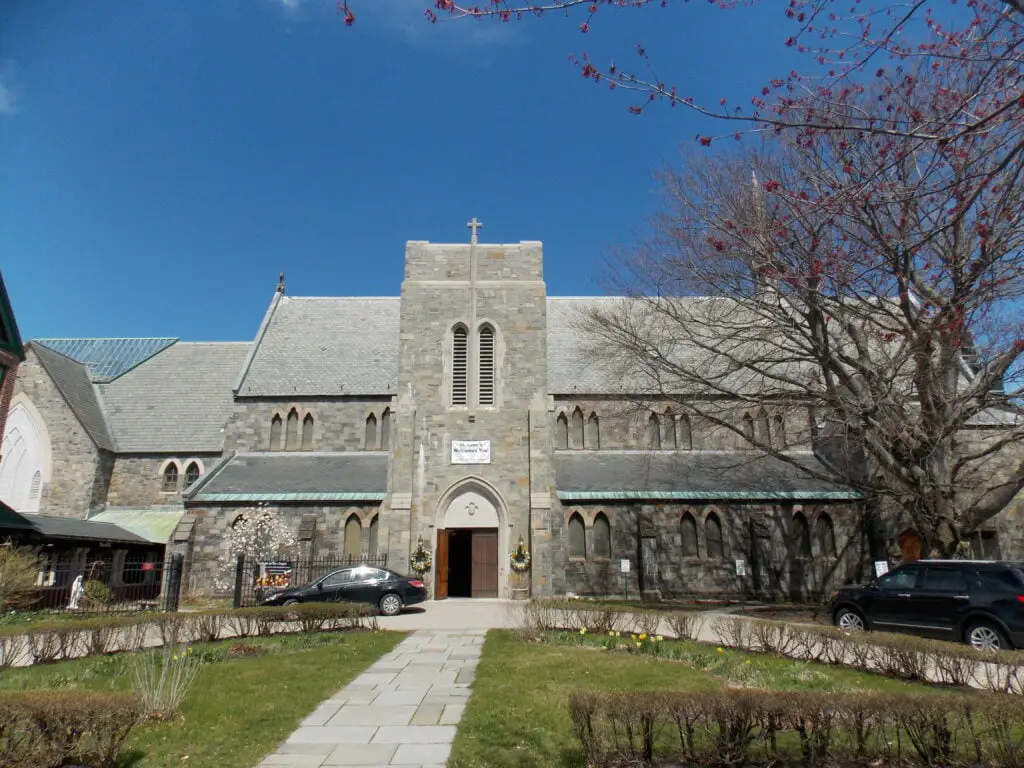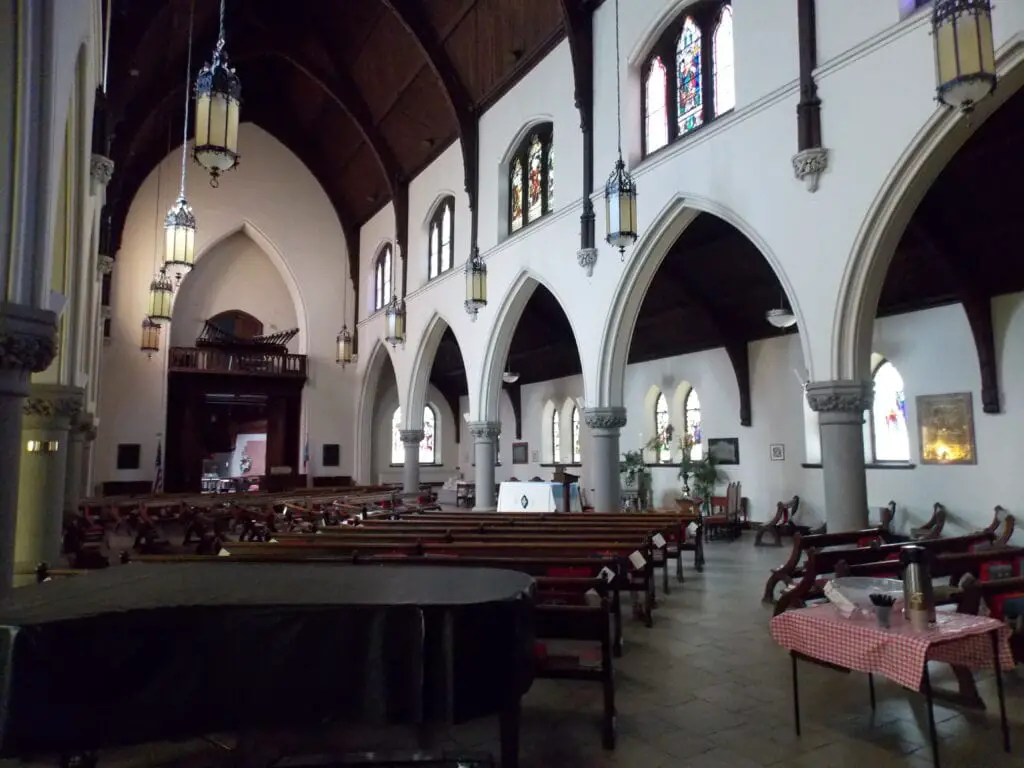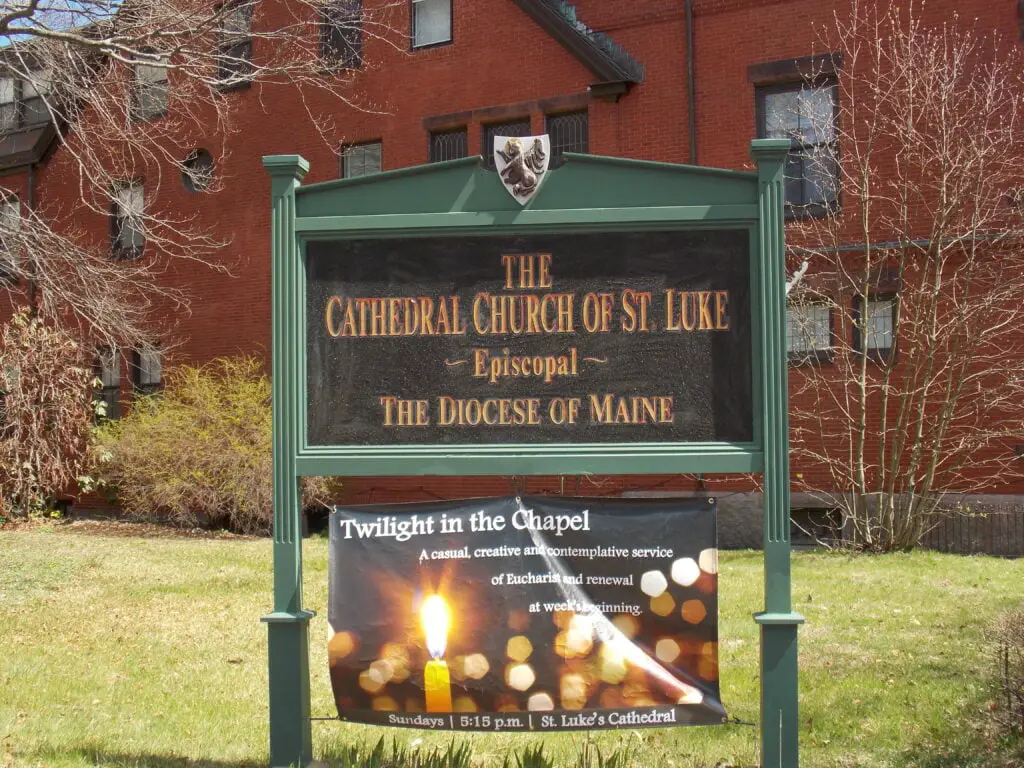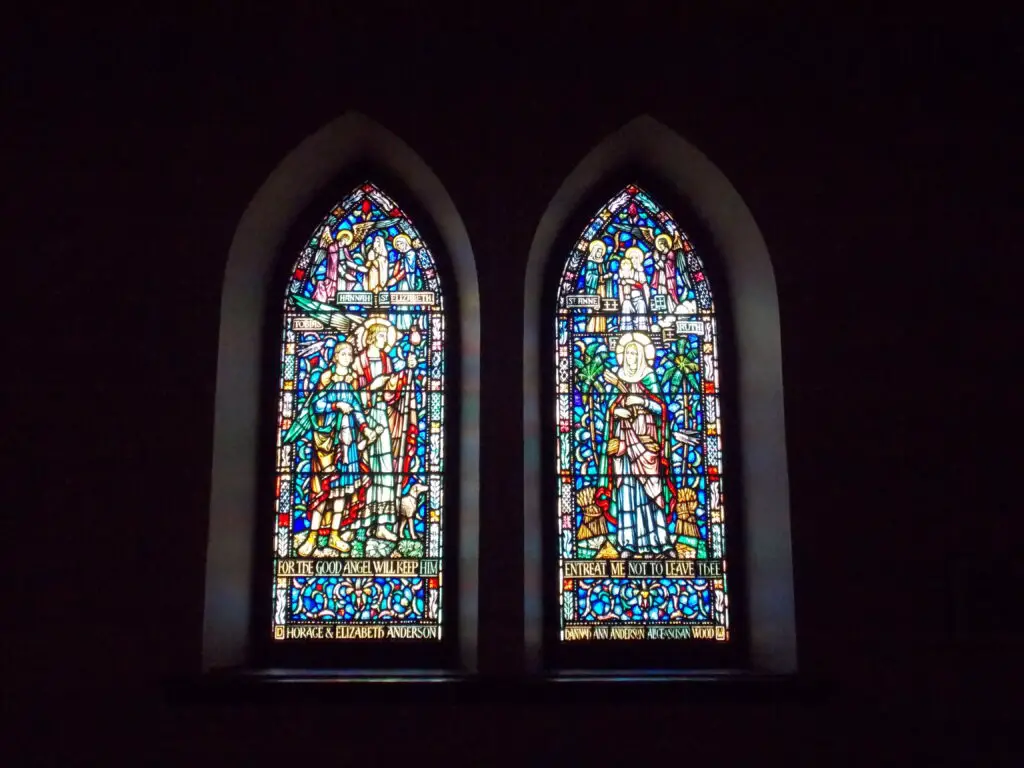Historical Background of the Cathedral Church of St. Luke
Once upon a time, in the year 1851, the Rt. Rev. Horatio Southgate, a Portland, Maine native with a vision, embarked on a journey to establish St. Luke's Church. Having served as the Episcopal Missionary Bishop to Constantinople, Southgate brought his worldly experiences back to his hometown. The first church building, a humble structure, was erected on Congress Street near Longfellow Square in the city's West End.
By 1866, St. Luke's had burgeoned to become the largest parish in the state, a testament to its growing influence and the community's dedication. As a result, the decision was made to designate it as the cathedral church of the diocese.
The cornerstone for the cathedral church was laid on August 15, the following year, paving the way for a new chapter in the church's history. Designed by New York architect Charles Coolidge Haight, the cathedral was an exquisite embodiment of the Gothic Revival style.
On a snowy Christmas Day in 1868, the first services were held within the cathedral's walls, marking the birth of a new spiritual haven.
Once the cathedral was consecrated on October 18, 1877, the previous church building was passed on to St. Stephen's parish. Two years later, the Maine legislature incorporated the cathedral, forever engraving its name in the annals of the state's history.
Architectural Additions and Renovations
Over the decades, the Cathedral Church of St. Luke has undergone numerous transformations. Each addition, each change, tells a story of its own. In 1898, the cathedral saw the installation of the Augustus R. Wright Memorial Rose Window, a beautiful testament to the church's growth and evolving identity.
Between 1904 and 1905, the Emmanuel Chapel and the cenotaph of Bishop Neely were built, enriching the cathedral with a more profound sense of historical significance. An adept architect, Stephen Russell Hurd Codman, designed the chapel as a tranquil haven for prayer and introspection.

As the years rolled on, the cathedral continued to evolve. The Incarnation Reredos, high altar, silver cross, and candlesticks were added in 1925, further enhancing the cathedral's grandeur.
1928 the cathedral welcomed a new member - the Skinner pipe organ. This musical addition brought a melodic harmony that resonated with the spiritual tranquility of the cathedral.
Another significant architectural marvel, the DeWolfe Belfry, was built in 1957. Designed by Cram & Ferguson, the Belfry provided a new entrance to the cathedral, welcoming believers and visitors alike.
The cathedral stood firm despite facing a catastrophic fire in 1985 that damaged the parish house extensively. Repairs were undertaken and completed two years later, a testament to the resilience and dedication of the community. In 2003, the cathedral underwent a $1.2 million renovation project, rejuvenating the structure while preserving its historical legacy.

Music and Worship
In the Cathedral Church of St. Luke, music is more than just melody; it's a language that connects the community. The music program blends the rich traditions of the broader Anglican choral experience, paired with a commitment to evolve and embrace the inclusive language and musical cultures from Maine and worldwide.
The cathedral is a welcoming space for many musical groups and artists within Portland and beyond. Every Thursday evening, the choir room is abuzz with rehearsals. On Sunday morning, the cathedral nave echoes with the choir's harmonies, enhancing the worship experience.
Christian M.Clough, the Canon for Music and Liturgy, is at the helm of this musical voyage. His dedication and passion for music have been instrumental in shaping the music program and ensuring its continued growth and vibrancy.

Recent News and Events
The Cathedral Church of St. Luke is not just a place of worship but also a space that hosts and celebrates significant milestones. In February 2022, the cathedral bid farewell to Albert Melton, who chose to retire after many years of dedicated service.
A special celebration was held during the 10 am service on January 30, where tributes were paid, favorite hymns were sung, and participation from current and former choir members elevated the event.
The cathedral also hosted memorable events like the Fall Concert in November 2022. This event showcased the talents of the Maine Pops Concert Band, a renowned group that enthralled the audience with tunes from Adele to Tony Bennett and John Philip Sousa to "Avatar." Such events are entertaining and testify to the cathedral's commitment to fostering a vibrant and inclusive community.

Conclusion
The Cathedral Church of St. Luke, with its towering Gothic Revival architecture and harmonious choir, stands as a beacon of faith, community, and culture in Portland, Maine. Over the years, it has seen the ebb and flow of times, weathered storms, and emerged stronger, preserving its spiritual legacy while constantly evolving to meet the needs of the present.
The cathedral continues to be an integral part of the fabric of Portland, welcoming individuals from all walks of life to partake in its myriad offerings. From the solemnity of worship to the camaraderie of community events, the cathedral is a space that binds the community together, fostering a sense of unity, love, and respect.
Its rich history, architectural grandeur, vibrant music program, and spirited community activities make the Cathedral Church of St. Luke more than just a place of worship. It is a living testament to the spirit of Portland, a symbol of its resilience, and a beacon of its communal harmony.

